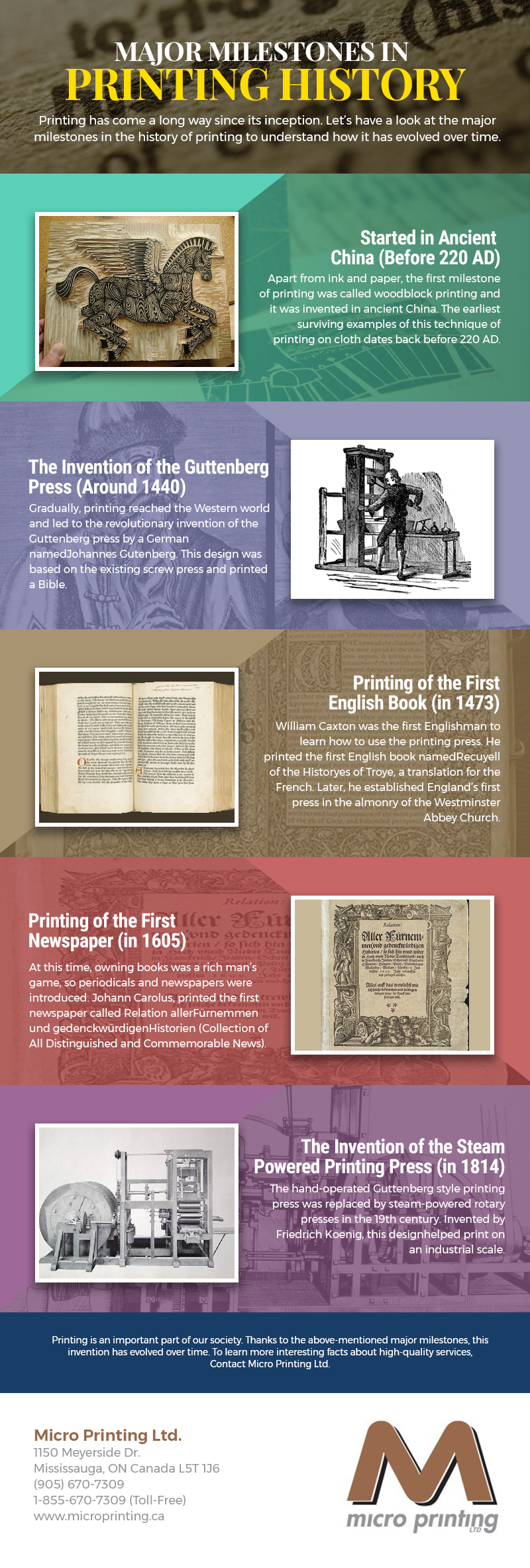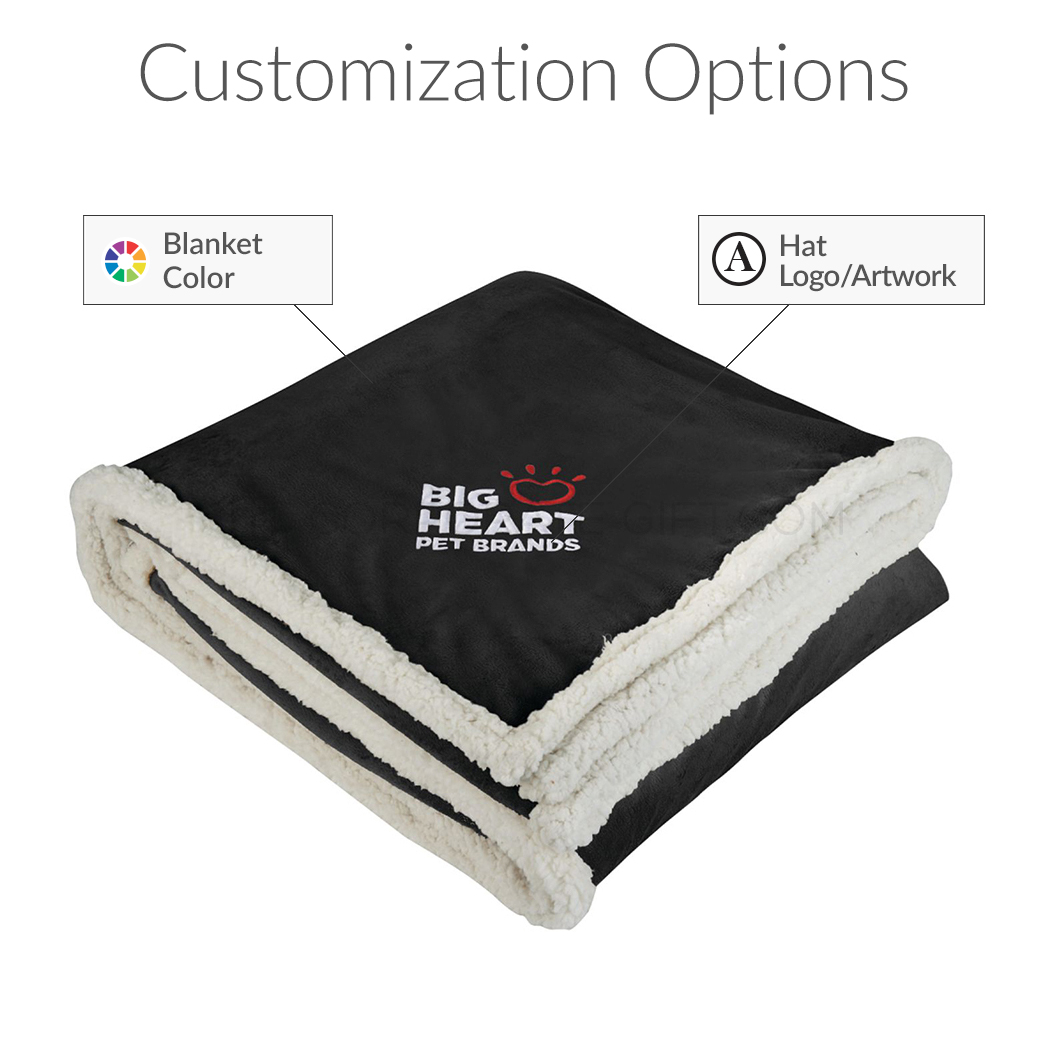How to Manage Print Orders and Deliver Files with Printcart for WooCommerce Web2Print Stores
Learn how to manage print orders, download design files, and automate production delivery using Printcart for WooCommerce. This guide covers order workflows, file naming, FTP/Drive sync, and best practices for Web2Print fulfillment.
- By David Printcart
- 96 views
- 0 reply

David Printcart
This quote has stayed with me throughout my journey—especially as I built Printcart from the ground u "What doesn’t kill you makes you stronger."
This quote has stayed with me throughout my journey—especially as I built Printcart from the ground up.
I'm David, CEO of Printcart, a division of Netbase JSC, and I’ve dedicated the past 15 years to transforming the Web-to-Print and Print-on-Demand (POD) industry. My goal from the beginning has been clear: to help printing businesses around the world scale through automation, personalization, and smart technology.
Before Printcart, I spent years consulting and launching web-to-print platforms for printers of all sizes—from local shops to global enterprises. That experience taught me to ask the right questions:
How can we reduce manual steps for printers and let them focus on growth?
What tools do customers need to personalize and place their orders effortlessly?
How can we make the Web2Print journey smoother, faster, and more profitable?
At Printcart, we combine AI, cloud-based automation, and a plug-and-play customization engine to bring that vision to life. But more than features, we care about outcomes—helping our clients deliver better user experiences, close more deals, and scale sustainably.
I’m always open to new ideas and feedback from the community. If you’re exploring how to evolve your print business or launch a new eCommerce venture with Web2Print capabilities, feel free to connect directly.
Let’s talk growth.
Email: project@printcart.com
My WhatsApp: +84937869689 ...
Related Post
The Advent of Printing: The Stone to Paper Journey Understanding the evolution of printing methods can unlock a treasure trove of historical knowledge. For centuries, the world relied on painstaking...
Soaring Beyond Generic Promotional Products Frustrated by standing out in a sea of promotional products? You’re not alone. In todays saturated market, businesses struggle to differentiate their offerings. Personalization is...
The Impact of Ecommerce on Home and Garden Industry What if you could transform your home and garden ecommerce business into a blooming success? Consumers are increasingly seeking guidance on...
Other Usefull Contents
You can see many success stories from our customers, and you may be one of them in the future













Why Smart Print Order Management Matters for Web2Print Success
If you're running a WooCommerce-based print shop, your customer’s journey doesn’t end at checkout—it begins there. In a typical ecommerce store, shipping a product involves picking, packing, and posting. But in a print-on-demand business, the actual creation of the product begins only after the order is placed.
That’s why a tailored print order management workflow is critical.
The Cost of Manual Processes
Many Web2Print businesses start by manually handling every incoming order—downloading files, confirming design details via email, and organizing assets into ad hoc folders. This leads to:
Missed file attachments or wrong artwork versions
Delayed production due to back-and-forth approval emails
Inconsistent file names confusing the production team
High error rates in reprints or misprints
Scaling Without Chaos
As your order volume increases, your operational risk grows exponentially. Managing 10 orders manually might be feasible. Managing 100+? It becomes a bottleneck. With Printcart's WooCommerce integration, you can automate the flow of data between your storefront and production backend.
Key features that enable scale:
Auto-generated file folders named by order ID or SKU
Real-time status updates for production teams
Revision links for editable designs
Integration with cloud storage (Google Drive, Dropbox, FTP)
Competitive Advantage in a Saturated Market
With print-on-demand businesses booming—especially for apparel, gifts, and packaging—delivering faster, with fewer mistakes, becomes a core differentiator.
According to a 2023 report from Printful, print-on-demand businesses that deliver customized products within 3 days see 33% higher repeat purchase rates.
SEO Value of Production-Ready Fulfillment
Fulfilling print orders faster also boosts SEO indirectly:
Fewer order issues → fewer negative reviews
More on-time deliveries → higher seller ratings on marketplaces
Happier customers → higher dwell time and repeat traffic on site
If you're serious about growing your Web2Print business, investing in a structured, automated print order workflow isn't optional—it's a growth strategy.
Next, we’ll explore exactly how Printcart enhances native WooCommerce fulfillment, and what you can do with its order dashboard.
See Printcart Order Sync Features | Compare to Traditional Workflow
How to Manage Print Orders and Deliver Files with Printcart for WooCommerce Web2Print Stores
Why Print Order Management Is Critical for Web2Print Stores
Order management isn’t just about confirming a payment — it’s about delivering the correct file, to the right team, in the right format, on time. For Web2Print stores built on WooCommerce, this becomes even more complex when each order includes personalized designs, uploaded artwork, or editable templates.
Printcart adds a powerful layer on top of WooCommerce to simplify this process. From reviewing design details to exporting production-ready files, it transforms the WooCommerce order panel into a full-featured print production dashboard.
With Printcart’s tools, store owners can:
Access design files directly from each WooCommerce order
Preview, download, or export files in multiple formats (PDF, SVG, PNG)
Sync orders to cloud services like Google Drive, Dropbox, or FTP
Tag orders by production status and track changes
Send revision links or approval requests to customers
According to a 2023 study by Keypoint Intelligence, over 70% of digital print providers cited file management and job tracking as the biggest operational pain point. This guide will walk you through how to solve that using Printcart’s built-in tools.
Coming up next: Overview of the Printcart Order Dashboard
Overview of the Printcart Order Dashboard
The Printcart Order Dashboard enhances WooCommerce’s native order system with detailed visibility into customer design activity and production-ready assets. This allows you to treat each order not just as a transaction, but as a full print job.
Access the dashboard:
Go to WooCommerce > Orders
Click on any order that includes a customizable product
You’ll now see extra tabs and sections powered by Printcart
These include:
Design Preview: Thumbnail or full-size preview of the final file
Design Type: Online design, upload-only, or pre-approved template
Download Links: Ready-to-export formats like PDF, PNG, SVG, and original files
Customer Inputs: Chosen material, size, options, notes, delivery time
Why it matters:
Without this dashboard, you’d need to chase down uploads manually, rely on emails, or dig into user accounts to piece together artwork. Printcart consolidates everything in one place for faster, more reliable production workflows.
Coming up next: Managing Print-Ready Files from the Order Panel
Managing Print-Ready Files from the Order Panel
Once an order is placed, your team needs immediate access to the correct files — not just for review, but for production, print preparation, and fulfillment. Printcart's order panel is built to streamline this process.
Step 1: Access File Downloads Per Order
From WooCommerce > Orders, open any print-enabled order
Scroll down to the Printcart Order Detail section
You’ll find file options like:
PDF (print-ready layout)
PNG (for previews)
SVG (for vector editing)
Original Upload (e.g. PDF, AI, PSD files from user)
You can preview files directly in the browser or click to download them to your local system.
Step 2: Understand File Naming Conventions
To stay organized in production, Printcart supports custom file naming. You can format file names to include:
Order number
Product name or SKU
Customer name or company
Timestamp or quote reference
File names are defined in PC Designer > Settings > File Export Format.
Step 3: Preview and Validate the Design
Click the Preview Design or View in Editor link:
Confirm the design matches the order’s specifications
Check trim lines, bleed areas, DPI, and layout
Send design to prepress or flag for revision if needed
Step 4: Manage Editable Designs (Online Design Mode)
If the order came from the online editor:
The Design ID is linked in the order
Click to view or clone the editable file
Re-export updated versions as needed (e.g. PDF, CMYK)
This makes handling customer edits and revision cycles significantly easier.
Step 5: Add Comments or Send to Production
Use the WooCommerce Order Notes section to:
Add internal comments
Tag production staff
Include Dropbox/Drive links if syncing externally
How Printcart Supercharges WooCommerce for Web2Print Fulfillment
While WooCommerce provides the foundation for order management—tracking payments, shipping info, and inventory—it’s not designed for the nuances of print production. Printcart fills that gap by turning WooCommerce into a Web2Print command center.
Let’s break down exactly how Printcart enhances your WooCommerce workflows.
From Checkout to Production: Seamless Order Sync
When a customer completes a purchase involving a customizable product:
Printcart captures the design file (editable or uploaded)
The order is instantly mirrored in the Printcart dashboard
All files, formats, product specs, and customer notes are attached
This eliminates the need to manually request files, search emails, or chase customers for missing details.
Rich Metadata in Every Order
Beyond basic product info, Printcart enhances WooCommerce orders with:
Design ID and version history
Print-ready file formats (PDF, SVG, PNG)
Customer-uploaded source files (AI, PSD, PDF, ZIP)
Custom fields: size, finish, material, delivery notes
This helps your production team understand exactly what’s needed—without ever opening Photoshop or sending emails.
Unified View: Design, Files, and Fulfillment in One Panel
From Printcart > Orders tab, you can:
View the design preview (live or snapshot)
Download high-resolution files in any format
Access order specs, revision history, and customer instructions
This single-screen view is ideal for production teams, designers, and even external vendors.
Printcart Premium: Automation Without Complexity
With Printcart Premium, you gain workflow automations that elevate fulfillment speed and accuracy:
Auto-export design files upon specific order statuses (e.g. “Processing”)
Password-protect ZIP exports for secure B2B orders
Sync folders to Google Drive, Dropbox, or FTP
Create per-client subfolders for repeat corporate buyers
Why This Matters for SEO, CX, and Retention
Reduced delays → Higher satisfaction scores
Error-free delivery → Better reviews + trust signals
Operational efficiency → More capacity for marketing/sales
In the next section, we’ll explore how to navigate the Printcart order dashboard and identify key features that reduce friction for your print team.
View Plugin on WordPress.org | See Feature Comparison
Inside the Printcart Order Dashboard: Your Web2Print Control Center
Printcart transforms the standard WooCommerce order list into a powerful, print-specific dashboard. Here, you can monitor every detail related to print production—from design previews to downloadable assets, print specs, customer uploads, and internal production notes—all in one place.
Let’s explore how to take full advantage of this interface.
Accessing Orders in the Printcart Designer
You can access your full order list from Printcart > Orders in your WordPress dashboard. Every WooCommerce order that includes a customizable product will appear here with extra metadata that’s essential for production.
What you’ll see:
Order ID & timestamps
Current WooCommerce order status (Pending, Processing, Completed, etc.)
Product name & quantity
Attached design preview thumbnails
Assigned internal status ("Sent to Print", "Awaiting Proof", etc.)
Viewing Product Customization Details and Design Files
Click on any order to enter the detailed view. You’ll find:
Editable design preview with zoom, rotate, and switch sides
Format tabs: PDF, SVG, PNG, AI, original upload
List of print area configurations (front/back/sleeve/etc.)
Selected product options: size, material, coating, finish
Customer-provided notes or special instructions
You can download files one-by-one or as a full ZIP archive.
Revision History and File Versioning
Printcart assigns a Design ID to each editable product. If a customer submits changes:
The revision is stored as a new version under the same ID
You can preview previous versions for comparison
Download and archive older versions for recordkeeping
This is especially helpful for repeat B2B clients or regulated industries.
Artwork Management at a Glance
Each order record provides insights into:
Whether files are uploaded or created in-editor
Which formats are available for download
Any upload issues (e.g. low resolution, missing fonts)
You’ll also find tools to:
Reassign internal tags
Add production notes
Trigger file exports
Built-In Tools for Team Communication
Printcart allows your team to leave internal-only notes on each order:
Use for production reminders, packing comments, or delivery instructions
These are not visible to the customer
Helps coordinate with fulfillment partners or off-site print teams
In the next section, we’ll dive into how to manage print-ready files, including naming conventions, format handling, and delivery best practices.
Printcart Dashboard Tutorial | Guide to Design File Formats
How to Manage Order Status, Customer Designs, and PDF Output in Printcart for WooCommerce
Control and Approve Custom Designs from Orders
With Printcart, each order includes attached customer designs, allowing admins to review, approve, or reject designs directly from the WooCommerce order page. This bridges the gap between sales and production and ensures every job meets your standards before fulfillment.
Where to Review Designs:
Navigate to WooCommerce > Orders
Click into any order containing a Printcart product
On the right sidebar under Customer Design, you’ll see thumbnails of uploaded designs
Choose to Accept, Decline, or View Details
Leave internal notes or send a notification email to the customer
This approval flow keeps your team aligned with customer expectations and avoids wasted materials due to faulty files.
Download Print Files in Production-Ready Formats
After approval, you can export customer designs in multiple file formats:
SVG, for scalable vector artwork
PNG (High-resolution), ideal for digital previews
JPG (CMYK with ICC profiles), for print-safe color integrity
PDF, with optional bleed, padding, and custom size
Use the "Download Design" tab in the order detail screen to access and export these formats.
Customize Your PDF Export:
Set paper size, padding, margins, and orientation
Include background images or not
Configure bleed lines for accurate cutting
This gives full control over output specs, making your production workflow predictable and efficient.
Industry Insight: 64% of online print shops surveyed by PrintWeek report using custom PDF layout tools to save over 15 minutes per job in prepress.
Enable Automation with PDF Layout and Output Templates
In PC Designer > PDF Layout, you can create reusable settings templates that define:
Standard page size and margins
Bleed line visibility
File naming conventions
Once configured, these layouts apply automatically for future orders, reducing repetitive setup.
Pro Tip: You can enforce the same page format for all sides of multi-page designs (like brochures) for consistency.
Next up: Improving Client Communication and Order Status Visibility
Automate Quote Approvals and Turn Requests into Orders
The quote-to-order process is a critical revenue driver for web-to-print stores. Printcart’s built-in quote management tool makes it easy to collect requests, communicate with leads, and turn them into confirmed WooCommerce orders—all from your admin panel.
Enable “Request a Quote” and Customize the Form:
Go to PC Designer > Get Quote
Enable “Show button request quote in checkout page” and “Allow Request a Quote even if product out of stock”
Customize the input form: first name, last name, email, and message fields can be edited or extended
Quote-to-Order Workflow:
Quote requests appear under WooCommerce > Orders with the status New Quote Request
Admins can reply to quotes, approve/reject uploaded designs, and notify customers via email
Upon approval, admins convert the quote into a live WooCommerce order with one click
PDF Quote Attachments:
Enable PDF generation via PC Designer > Get Quote > PDF Quote
Automatically attach a branded PDF to every quote email
Add your company logo and hide/show product list as needed
Did you know?
According to HubSpot, B2B buyers are 2.8x more likely to convert when they receive a fast, personalized quote response—and Printcart makes that automation seamless.
Managing Custom Artwork and Revision Workflows in Printcart
Handling design revisions is one of the most time-consuming and error-prone parts of running a Web2Print business. Printcart eliminates the need for endless email threads by embedding version control, editable design links, and approval workflows directly into the WooCommerce order panel.
Let’s explore how to streamline this critical stage of production.
Editable Designs with Persistent Design IDs
When a customer personalizes a product using Printcart’s Online Designer, the system generates a Design ID. This ID links the order to an editable, versioned design that:
Can be revised after checkout
Saves each edit as a new version
Remains editable for future reorders or reprints
Sending Revision Requests to Customers
Within the order panel under Customer Design, you’ll find a preview of all submitted artwork. From here, you can:
View both front and back designs
Accept or reject designs individually
Click View detail to inspect layers, text, and images
If the design needs changes, click Send notify mail:
Enter the reason for rejection (e.g. "Low resolution logo" or "Missing bleed")
Choose status: Files accepted or needs revision
The system sends an email with a link to edit the design directly
File Version Tracking
Every time a design is edited, Printcart saves the new version under the same Design ID. You can:
Compare versions before approving
Restore previous files if the customer requests to revert
Download versioned files with clear file names (e.g.
design-2288-v2.pdf)This removes the guesswork around "which file is final"—a common pitfall in traditional workflows.
Approval Logging and Design Communication
All approvals and rejections are timestamped
You can add internal notes visible only to your team
Customers are kept in the loop via automated email
Using Revision Logs to Avoid Reprints
In regulated industries (packaging, pharmaceuticals, or finance), version control is critical. Printcart’s internal notes and download logs allow you to prove:
What the customer submitted
What you approved
When each action took place
This is especially helpful for bulk orders or customers with approval workflows of their own.
According to Printcart usage data from 2024:
34% of customizable print orders undergo at least one revision
Design-linked revision requests result in 70% faster turnaround vs. email-based feedback
In the next section, we’ll dive into assigning internal order statuses and production tags—so your team can track jobs from approval to shipping.
Printcart Revision Management Guide | Customer Approval Tips
Assigning Internal Statuses and Tags for Efficient Print Production
As your order volume increases, relying solely on WooCommerce's default statuses (like "Processing" or "Completed") isn’t enough to manage production effectively. That’s where Printcart’s internal tagging and status system comes in.
This feature lets you assign order-level labels that reflect the real-world status of each job—especially valuable for larger teams and shops with multiple handoff points.
Custom Status Tags in Printcart
From the order dashboard or detail page, you can set internal statuses like:
"Sent to Print"
"Awaiting Proof Approval"
"Design Revision Required"
"Printed – Ready to Ship"
"Hold – Artwork Issue"
These statuses are not customer-facing, but they help your production and admin teams stay aligned at every step.
Adding and Managing Order Notes
Within each order, Printcart allows you to:
Add private notes (seen only by staff)
View a chronological log of all actions (design acceptance, status changes, etc.)
Use notes to communicate between designers, prepress, or customer service
Example use cases:
“Customer requested a gloss finish, not matte. Adjust file accordingly.”
“Send to external partner via FTP once approved.”
Combining Statuses and Automation
Internal statuses can also trigger actions if paired with Printcart Premium:
When status = "Approved", auto-send files to Google Drive
When status = "Awaiting Proof", email the customer revision link
When status = "Ready for Vendor", package ZIP and send to third-party
This enables a true production pipeline without writing any code.
Production View for Teams
You can filter your Printcart Orders view by:
Internal status
Product type (e.g. labels, apparel, stickers)
Date range
Customer or order total
This helps managers prioritize rush jobs, check on bottlenecks, or plan daily print queues.
According to Printcart internal analytics:
Stores using internal status tags process 22% more orders per day
Job handoff time (between admin and production) is reduced by 41% on average
Best Practices
Standardize your status names with clear definitions (e.g. “Design Approved” means final proof is accepted and no changes will be made)
Use tags + notes to flag exceptions or complex jobs
Train your team to always update internal status during each step
Next up, we’ll cover bulk actions—how to manage multiple orders at once, download batches of files, and speed up file delivery to production partners.
Printcart Status Management Guide | Print Workflow Optimization Tips
Bulk Actions for Managing Large Print Batches Efficiently
If your store regularly processes dozens—or even hundreds—of print orders, handling them one by one is no longer practical. Printcart’s bulk actions help you manage large volumes of orders with just a few clicks, streamlining your operations and improving turnaround time.
Bulk File Download for Multiple Orders
From the main Printcart order list:
Select multiple orders using the checkboxes.
Click Bulk Download.
Choose file formats (PDF, SVG, PNG, ZIP).
Printcart creates a structured ZIP archive with folders named by Order ID or SKU.
This is ideal for:
Weekend or holiday bulk fulfillment
Team handoffs between admin and production
Delivering to external print vendors or warehouses
Exporting Summaries for Offline Printing
In the Order Export tool, you can:
Export order summaries in CSV/Excel
Include file links, specs, quantities, and shipping notes
Filter by date range, tag, or product type
This is especially helpful if you:
Manage jobs on a production floor with no internet access
Use external systems (ERP/MIS) that need order metadata
Want to generate reports for print machine operators
Managing Approvals in Bulk
If your orders involve customer-submitted artwork:
Use the bulk approval tool to accept or reject multiple designs at once
Add a shared reason (e.g., "Missing bleed area")
Notify all selected customers in one batch email
For upload-only workflows (where customers submit final print files):
Use internal tags to flag jobs as “Approved – No Design Review”
Auto-route to production without manual steps
Automating Batch Actions
With Printcart Premium:
Set rules to automatically tag or sync files when a batch hits a certain size
Bundle all files from one day into a Drive or Dropbox folder for delivery
Notify vendors when a folder is ready
When You Need More Than the Defaults
Some Web2Print workflows—especially those involving packaging, B2B approvals, or third-party logistics—may require custom development or API integrations. Our Printcart team can assist with advanced automation, vendor routing, and custom tagging rules.
Best Practices
Schedule bulk downloads during off-peak hours to reduce server strain
Use standardized folder structures to avoid confusion in print queues
Train staff on batch approval criteria and tagging protocol
In the next section, we’ll look at real-world examples of businesses using Printcart to handle hundreds of custom orders monthly—with Google Drive sync and streamlined handoffs to production teams.
Bulk File Export Guide | CSV Order Summary Tips
Real-World Case Studies: Printcart in High-Volume Production Workflows
You’ve seen the features—now here’s how real businesses are using Printcart + WooCommerce to handle complex and high-volume print operations with ease. These case studies show how automation, cloud syncs, and smart workflows transform print fulfillment from chaotic to streamlined.
Case Study 1: Apparel POD Store with 500+ Orders per Month
A mid-sized print-on-demand apparel brand in Canada sells custom t-shirts, hoodies, and tote bags via WooCommerce. Before Printcart, they spent hours each day manually organizing customer files and responding to revision requests.
After implementing Printcart with Google Drive sync:
All design files are exported to Drive folders by SKU and order ID
Customers edit their designs post-checkout using Design ID links
Production operators print directly from synced folders
Case Study 2: Signage Company Syncs With Factory Machines
A Vietnamese signage manufacturer needed to automate the transfer of customer-approved designs to their laser cutting equipment. The challenge: syncing files without manual download or file renaming.
With Printcart Premium + FTP automation:
Artwork is exported to a local FTP folder mapped to their RIP software
Designs use standardized file names like
DesignID_Side_ProductName.pdfOnly approved files are synced—reducing operator errors
Case Study 3: Packaging Printer with B2B Custom Development
A packaging supplier needed to build a multistep workflow:
Step 1: Customer uploads dieline and product art
Step 2: Designer adds finishing and coating layers
Step 3: Printcart exports layered PDF to Google Drive, per client folder
This was implemented using Printcart’s plugin plus custom dev services to:
Map internal print templates to products by SKU
Trigger design merging logic on "Approved" status
Store assets in Drive folders named
//Proof-Final/Results Across Businesses
According to an internal 2025 Printcart performance survey:
Stores using Google Drive sync reported 90% fewer file delivery errors
Teams using Design ID-based revision workflows responded to customers 3x faster
Bulk automation users averaged 30% more orders processed per staff hour
Real-world success comes not just from technology—but from aligning Printcart features with each store’s unique workflow.
Next, we’ll wrap up with practical tips and best practices you can implement this week to improve your Web2Print operations.
Explore More Case Studies | Book a Workflow Review with Printcart
Best Practices and Workflow Tips for Printcart Users
Now that you’ve seen how Printcart helps real businesses scale, it’s time to apply those lessons to your own workflow. Below are proven practices that reduce errors, speed up production, and make your Web2Print operation easier to manage.
1. Use Status Tags as Workflow Stages
Don’t rely solely on WooCommerce statuses. Set up internal Printcart tags like:
“Design Pending Approval”
“Print Ready”
“Files Sent to Vendor”
“Hold for Revision”
Use filters to prioritize daily production based on these statuses.
2. Automate File Sync with Structure
Syncing artwork to Google Drive or FTP? Set up folder rules that match your process:
/2025/Orders//Clients//Packaging//ReadyToPrint/Name files with SKUs, design IDs, or dates to avoid confusion across shifts or vendors.
3. Build a Design Approval SOP
Standardize how your team handles revisions:
Always send editable design links via Printcart
Save rejection reasons as templates
Maintain version logs for all high-value or regulated jobs
4. Batch Actions Daily or Weekly
Use bulk tools in Printcart to:
Approve designs in batches
Export all Friday orders at once
Trigger file delivery to external vendors weekly
Consider combining this with Google Sheets or Airtable dashboards to visualize workload.
5. Archive Everything
Enable ZIP downloads and auto-sync to long-term storage:
Use Drive Business folders with audit logs
Export all design files and order notes per client for backup
If clients come back months later, you’ll have a full trail of approved files, notes, and revisions.
6. Work with Printcart for Customizations
If your workflow includes:
Layered design assembly (e.g., coatings, folds, finishing)
Specific product template matching
API sync to ERP, warehouse, or shipping
Then consider working with Printcart’s dev team to build a custom solution.
Measurable Gains
From user-reported feedback:
Teams using daily tags + notes saw 20% fewer fulfillment delays
Google Drive automation saved 8–15 hours/week for mid-size POD stores
SOP-driven revision handling improved customer NPS by +18 points
Printcart is more than a design tool—it’s a complete backend for Web2Print production. When properly configured, it powers clear communication, traceable file delivery, and faster order turnaround.
In the final section, we’ll wrap up with a recap and checklist to apply these insights today.
Printcart Best Practices Library | Talk to a Printcart Workflow Consultant
Wrapping Up: Your Printcart Order Workflow Optimization Checklist
You’ve just completed a deep dive into the best ways to manage print orders and deliverables using Printcart + WooCommerce. Whether you’re fulfilling five orders a day or five hundred, the core principles remain the same: clarity, automation, traceability, and control.
Recap of Key Takeaways
Centralize file handling: Use Printcart’s dashboard to unify design previews, file downloads, and metadata.
Automate delivery: Sync to Google Drive, Dropbox, or FTP based on internal tags and statuses.
Streamline revisions: Use Design ID and editable links to cut back on back-and-forth with clients.
Tag smartly: Internal status tags keep your team aligned across design, prepress, and fulfillment.
Act in bulk: Approve, export, and deliver orders in batches to save time and reduce friction.
Implementation Checklist
✅ Install and activate the Printcart WordPress plugin
✅ Configure order sync and design file formats
✅ Set up status tags for "Print Ready", "Needs Approval", etc.
✅ Create file sync rules for Google Drive/Dropbox
✅ Establish design SOPs and rejection templates
✅ Use internal notes for team handoff clarity
✅ Schedule regular bulk downloads and exports
✅ Contact Printcart for custom workflow needs
Ready to Go Further?
If your business handles complex workflows, B2B orders, or needs API-based automation, our team can help you build a custom solution. From ERP integrations to print queue routing and asset security, we’ve helped 7,000+ stores streamline their Web2Print backend.
Additional Resources
Printcart Documentation & Tutorials
Printcart Plugin on WordPress.org
Explore Premium & Setup Packages
With Printcart, your WooCommerce store isn’t just a storefront—it’s a complete Web2Print production system. Use this guide as your go-to reference, and optimize each stage from order to delivery.
Let’s print smarter.
— The Printcart Team
David Printcart
This quote has stayed with me throughout my journey—especially as I built Printcart from the ground up.
I'm David, CEO of Printcart, a division of Netbase JSC, and I’ve dedicated the past 15 years to transforming the Web-to-Print and Print-on-Demand (POD) industry. My goal from the beginning has been clear: to help printing businesses around the world scale through automation, personalization, and smart technology.
Before Printcart, I spent years consulting and launching web-to-print platforms for printers of all sizes—from local shops to global enterprises. That experience taught me to ask the right questions:
How can we reduce manual steps for printers and let them focus on growth?
What tools do customers need to personalize and place their orders effortlessly?
How can we make the Web2Print journey smoother, faster, and more profitable?
At Printcart, we combine AI, cloud-based automation, and a plug-and-play customization engine to bring that vision to life. But more than features, we care about outcomes—helping our clients deliver better user experiences, close more deals, and scale sustainably.
I’m always open to new ideas and feedback from the community. If you’re exploring how to evolve your print business or launch a new eCommerce venture with Web2Print capabilities, feel free to connect directly.
Let’s talk growth.
Email: project@printcart.com
My WhatsApp: +84937869689